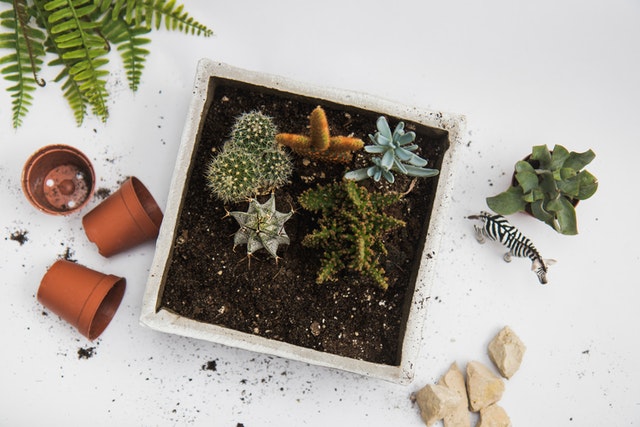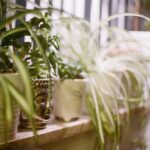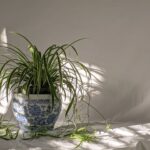Should you choose a container that has holes on the bottom for drainage, or should you get one that doesn’t have any drainage holes at all? Do all plants require a container with drainage holes, or can you buy that beautiful pot without any? Many new plant owners find drainage holes to be extremely perplexing, which is understandable given the common misconception that all plants require drainage holes.
This plant care article is going to focus on drainage holes, and we are going to go over all you need to know about them. When you’ve finished reading this article, you’ll have a complete understanding of how to utilize the two distinct types of pots for your indoor plants.
Table of Contents
In this plant care tutorial, we’ll look at the following topics:
- What is the purpose of drainage holes in pots?
- How can plants be grown in a container without drainage holes?
- How can drainage holes in pots be covered?
- Which plants require drainage holes in their pots?
- Is one drainage hole sufficient?
Let’s have a look at pots and drainage holes to see how you can offer your plants the greatest possible home!
Read more: What Sort Of Fertilizer Is Best For Houseplants?
What is the purpose of the drainage holes in pots?
Drainage holes get their name from the fact that they are used to drain excess water from the pot. When you water your plant, the soil will take up as much of the moisture as it can, and the remaining water will fall to the lowest point of the container. This additional moisture drains out of the pot thanks to the drainage hole (or holes) that are located at the bottom of the pot.
The drainage hole that you’ve created here is very vital for maintaining the health of your plant. There are several ways in which your plant might be harmed if the moisture that collects at the base of the pot is unable to evaporate. It may lead your plant to become overwatered.
The moisture that the soil needs to adequately hydrate your plant has already been absorbed by the soil, but there is still some excess moisture that has been left behind. Your plant will become suffocated in excess moisture if the soil does not dry out soon enough.
If you overwater your plant, the condition might grow much worse since there is a greater chance that the plant could get root rot as a result of the overwatering. The drainage hole at the bottom of your container minimizes all of these negative effects while also benefiting your plant.
Given that drainage holes are necessary for the health of your plant, the question arises as to why certain pots lack drainage holes. Let’s take a look at that, and while we’re at it, let’s also discuss how you may continue to make use of these pots to cultivate your plants.
How can plants be grown in a container without drainage holes?
Although pots with drainage holes are preferable, it is not impossible to utilize containers that do not have such features. You may still use such pots, but you’ll need to take extra precautions to keep your plant healthy.
In pots without a drainage hole, there are two things you may do to avoid overwatering and root rot:
- Fill your pot with a non-organic foundation layer.
- As a raised bottom, use the plastic pot with holes that your plant arrived in.
Let’s take a brief look at both of these options, since they’re a simple method to keep your plants happy when using pots without drainage holes.
Read more: How To Apply Neem Oil To Your Plants?
Fill your pot with a non-organic foundation layer
Root rot can be caused by having water sitting at the bottom of your pot, as we have seen in previous lessons. On the other hand, if you make a foundation out of inorganic material, there is a lower probability that things would start to decay.
There are a variety of materials that may be used to create these foundation layers, but Leca and Smart Gravel are my personal favorites. These foundation layers raise the soil from the bottom of your pot, removing it from the water.
As a raised bottom, use the plastic pot with holes that your plant arrived in
The second alternative is to utilize the plastic pot that came with your plant. This container’s bottom is perforated with drainage holes, allowing you to conveniently water the plant whenever it need it. Because you may place this plastic pot inside of another type of pot that does not have a drainage hole, you can continue to use the other kinds of pots.
When using a plastic container with holes in the bottom, the container without drainage holes that it is standing in will collect any surplus moisture. The moisture will be collected by the outer pot, which will also keep the moisture away from the soil in the inner pot.
Read more: Can You Take A Houseplant Outdoors?
How can drainage holes in pots be covered?
Although drainage holes are beneficial to the overall health of your plants, they are also extremely inconvenient to use. When you move the container quite a lot, you’ll notice that soil spills out of the container on a frequent basis. Covering the hole with anything will keep this from happening.
The easiest technique to cover the drainage holes is with material that will not retain wet. It is not recommended that you use something to cover the grip such as a piece of cloth since it will absorb moisture and compromise its effectiveness. A piece of perforated gardening sheet or a rock would be an improved choice since they would enable liquid to pass through them easily.
You’ll note straight away that these covers still enable moisture to drain while preventing (a lot) of soil from escaping from the pot.
Now that we know how to utilize a pot with a drainage hole and a pot without one, let’s find out which plants thrive in pots with drainage holes and which thrive in pots without drainage holes.
Which plants require drainage holes in their pots?
Many people who own plants are under the impression that specific kinds of plants must be grown in containers that are equipped with drainage holes. To our good fortune, this is not always the case. There are techniques to obtain good drainage in pots without a drainage hole, as we’ve seen before in this plant care guide.
As a result, you may grow drought-tolerant plants in both pots with and without drainage holes. It is possible to cultivate a plant that thrives in dry conditions in a container that does not have a drainage hole if you have such a plant. When you are ready to use your pot, you should check to see if it has a foundation layer of rocks, Leca, or Smart Gravel. If you do, then you are ready to use your pot.
You don’t have to apply that foundation layer if you don’t want to because there are a few plants that thrive in it. There are several Peace Lilies and Spider plants among these other plants.
They thrive in damp environments and have the ability to rapidly absorb the moisture present in the soil, which helps them avoid significant issues. This does presume that you have a container that is of an appropriate size for the plant you intend to grow.
Read more: What Exactly Is Leca, And Why Is It Beneficial To Plants?
Is one drainage hole sufficient?
It’s likely that many of the pots sold at your neighborhood gardening store just have a single drainage hole. You may be wondering if that is sufficient to keep your plant pleased. In most cases, it is sufficient to have a single drainage hole located in the centre of the container.
Because the bottoms of these pots are typically flat, the moisture will flow down and towards the drainage hole in an even and consistent manner. It is possible to drill more drainage holes in the container, although doing so is not required for the plant to thrive in its new environment.
Conclusion
New plant owners sometimes struggle to understand the purpose of drainage holes. They are puzzling due to the ease with which one may overwater plants; if this is the case, then why would one want to purchase a container that retains excess water?
Fortunately, there are various methods to give pots without drainage holes a chance. Even if the container in which your plant was grown does not have any drainage holes, it is possible to get satisfactory drainage by placing the plastic pot that the plant was grown in inside of the container. To protect the plant from being submerged in an excessive amount of water, you may place a layer of pebbles, Leca, or Smart gravel at the bottom of the container it is housed in.
Both containers with and without drainage holes are wonderful growing mediums that are suitable for every plant. Any plant may be successfully grown in a container that does not have drainage holes by just taking a few more steps.
I appreciate you taking the time to read my article. I really hope that this information is of use to you in maintaining the health and beauty of your plants.
Read more: Houseplants Growing Medium
Frequently Asked Questions
How to plant in pots without drainage holes?
Plants may be grown in pots without drainage holes if you maintain them in the plastic pot they arrived in and place them in the larger pot. It is also possible to add a foundation layer of rocks, Leca, or Smart Gravel in order to protect the soil from the excessive wetness.
How to cover drainage holes in pots?
Drainage holes can be covered with pebbles or gardening sheets that allow water to flow freely. This will assist you in retaining the soil, while allowing excess rainwater to flow away from the area.
How to provide drainage for pots without drainage holes?
A foundation layer of rocks, Leca, or Smart Gravel can be used to provide drainage for pots that do not have drainage holes. This prevents the plant and soil from coming into contact with the water that is sitting at the bottom of the container.
How to make drainage holes in plastic pots?
Drill a hole at the lowest setting to produce drainage holes in plastic pots. You risk shattering the pot if you use a higher setting.
Should you drill holes in pots?
If you desire a drainage hole, drill a hole in your pots. Pots that do not have drainage holes can still have excellent drainage if you add a foundation layer of rocks, Leca, or Smart Gravel. Another option is to use Smart Gravel.
What size should drainage holes be?
It is recommended that the drainage holes be no more than an inch in diameter at most (2.5 cm). If you want additional drainage, you may either drill additional drainage holes in the pot or add a foundation layer of Leca and Smart Gravel to the container.
Read more: What Exactly Is Vermiculite, And How May It Be Used With Houseplants?
Photo by Rubyand Lion: https://www.pexels.com/photo/green-cactus-plant-in-white-pot-1118154/



